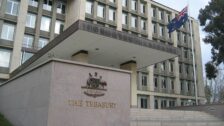Government faces split opinions on wholesale investor test reforms
If anything, the wide variety in proposed fixes to the outdated wholesale investor test that have been put to government hints at why reform has languished for over two decades.
Since 2001, the test was comprised of three separate benchmarks that a retail client can meet to reach wholesale client status; a net assets test (A$2.5 million), a 2-year gross income test ($250,000 per year), or a product value test ($500,000). In 2007, a fourth test was added to the Corporations Act – the sophisticated investor test – which allowed licensees to deem clients fit to access wholesale products due to “reasons such as experience or professional training”.
From the outset, however, this clutch of benchmarks have become less and less fit-for-purpose.
Neither the income and assets tests were indexed, and inflation has increased the percentage of adult Australians that qualify through one of these ‘wealth’ tests from 1.9 per cent in 2002 to 16.2 per cent in 2021. $2,500,000 million in 2001 is worth $4,610,000 today. Contributing to this blowout is the inclusion of residences in the assets test, which have soared in value.
While the wealth tests have been warped organically by inflation, the sophisticated investor test was misshapen from the start. Presented without regulatory guidance, financial advisers have always been nervous about using it – especially through an era of heightened regulatory scrutiny.
To these ends, a Parliamentary Joint Committee on Corporations and Financial Services kicked of an inquiry into the wholesale investor test in March last year. Last week feedback from stakeholders showed just how much divergence of opinion there is on ways to make the test fair and effective.
It’s not the first inquiry to head down this road. Updating the test was a recommendation out of the 2011 Future of Financial Advice reforms, with 11 reform options provided. Ultimately, no changes were made.
The asset test liability
There has been a remarkable variety of solutions to the wholesale investor test puzzle presented in submissions. On the assets test alone, no two major groups provided an analogous response.
The Financial Services Council (FSC), for example, proposed an increase in the assets test from $2,500,000 to $5 million including the family home, or keeping it at $2,500,000 without the residence. ASIC wants to pin the asset test to inflation at $4,610,000, while keeping the residence and adding indexation. The Australian Financial Complaints Authority (AFCA) supports an undefined increase, while the Financial Advice Association of Australia (FAAA) wants to increase the test to an indexed $2 million sans the residence (or $4 million per couple).
Interestingly, the FSC was one of the only groups to not plump for indexation of the wealth tests “given the uncertainty and cost for the industry it would create, such as ongoing compliance systems”. The council said it would be open, however, to a “legislative mechanism for periodic consideration” of increases.
So there are plenty of options for the government to consider. And that’s just a handful of proposals (out of 102 submissions filed) on one of four tests up for reform.
Outside the box thinking
The water gets even murkier when questions are (justifiably) asked about the validity of ‘bright line’ monetary benchmarks, with the FAAA among those to point out that reaching an arbitrary wealth marker doesn’t necessarily correlate to a client’s ability to soundly navigate investment decisions.
The FAAA proposed introducing a “financial literacy/capability test” component to the wealth test so that financial advisers would need to add their professional opinion to one of these financial thresholds. This would be similar to the sophisticated investor test, but included in the wealth tests, rather than instead of them.
Speaking to The Inside Adviser, FAAA policy chief Phil Anderson says the knowledge component of assessment shouldn’t be “secondary” to monetary tests. “We don’t want people landing on wholesale investment without sufficient financial knowledge,” he says. “It’s more than ones and zeros.”
The FAAA’s proposal comes after conducting several adviser representative committees on the issues, Anderson added. “It’s something that we’ve drawn from our members.”
The FSC also recognises that wealth and income “are not the perfect proxies for financial literacy and sophistication”, but says this just “underscores the need for the test to cover an appropriate proportion of the population”. The group instead targeted the sophisticated investor test, which is “too subjective” without regulatory guidance from ASIC, and proposed making it more robust by adding “criteria such as previous experience investing in wholesale products, experience or academic qualifications in the finance sector or experience in directing a large business”.
AFCA supports an increase in the wealth tests, but also wants the addition of an assessment of financial risk tolerance. The authority also wants to see more clarification around the status of SMSF investors to prevent incorrect tests being applied.
Fork in the road
Which direction the government takes on wholesale investor rules is hard to guess. If recent missteps by financial minister Stephen Jones have showed anything, it’s that good intentions may not match acuity on policy. (Calling a specifically unqualified cohort of advisers “qualified advisers”, for example, was a howler, and the Compensation Scheme of Last Resort is shaping up as an unmitigated disaster.)
What’s clear at this point is that something will be done, eventually. With the Quality of Advice review in train, Jones appreciates that now is the time.
But his comments in February should temper expectations of bold reform.
“We have no interest in stifling innovation, or unnecessarily restricting mum and dad investors investing in our future,” he said. “Our main focus is to just make sure the consumer protections and investor protections are fit for purpose in a modern economy.”
We’ll make change, in other words, but nothing so great that wholesale investment is noticeably crimped.











